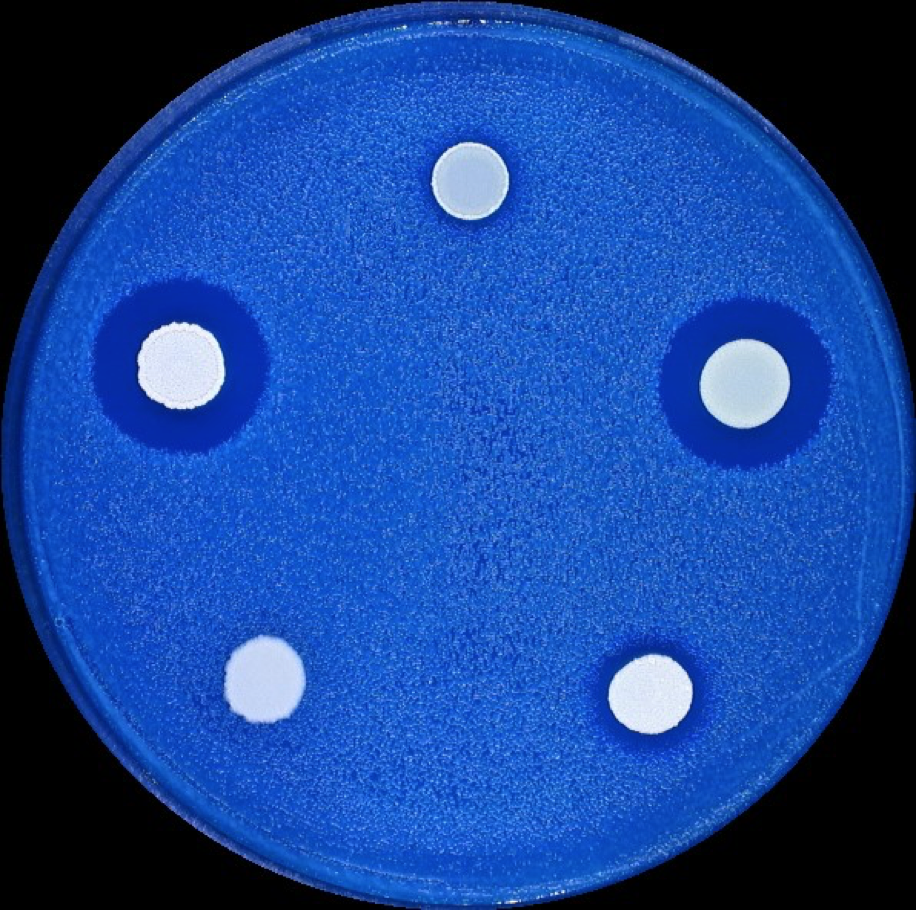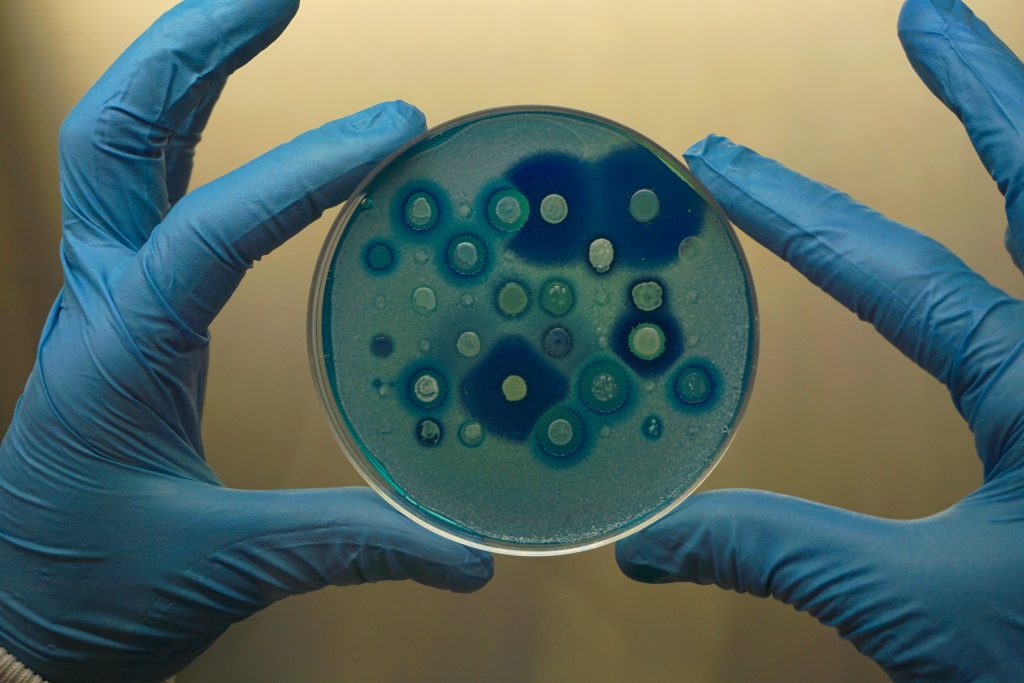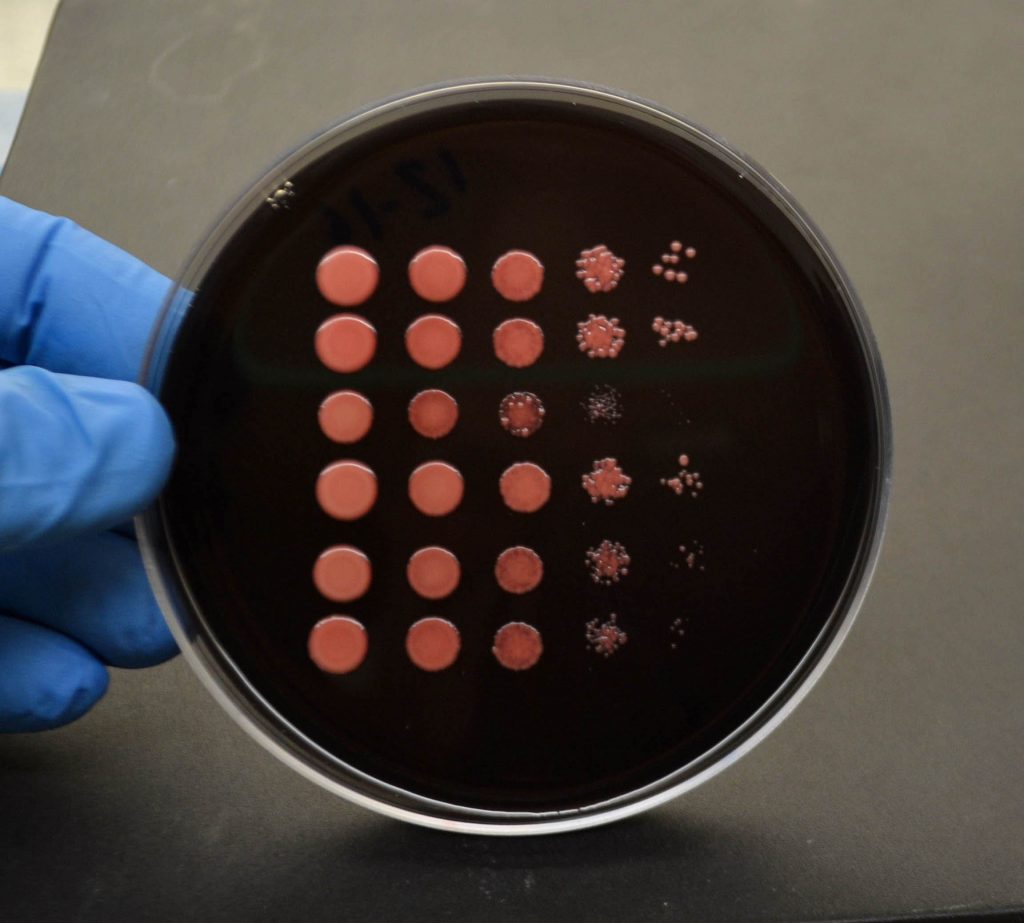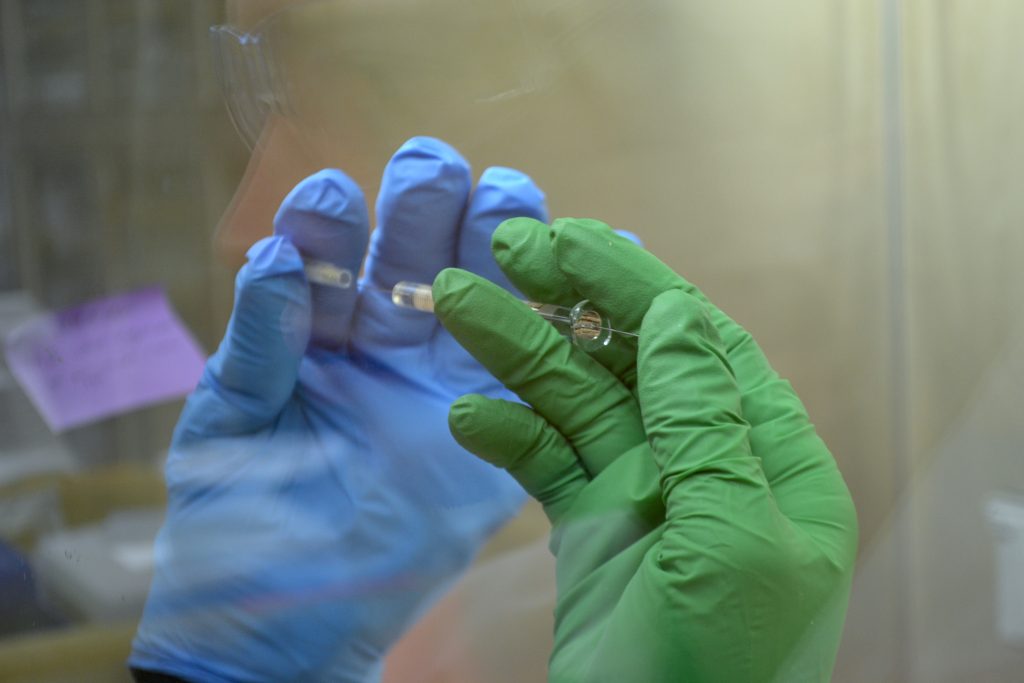
A novel approach to fight a drug resistant fungal pathogen
By: Lance Fredericks Email: fred6557@vandals.uidaho.edu
Home Town: Coeur d' Alene, Idaho High School: Coeur d' Alene Charter Academy 2016
Major: Microbiology, Molecular Biol & Biotechnology
Department: Biological Sciences
College: College of Science
The initial discovery
We are investigating the potential of protein toxins naturally produced by Saccharomyces cerevisiae (Brewer’s/Baker’s yeast) to inhibit the growth of the human pathogen Candida glabrata. These toxin producers are known as killer yeasts to those who study them. We have tested over 15,0000 interactions between our killer yeasts and 130 isolates of the pathogen. We were pleased to find that killer toxins are capable of inhibiting the growth of every single isolate of Candida glabrata we have tested. These results lead us to believe the toxins could one day be developed into therapeutics to treat C. glabrata in humans.

The problem of drug resistance
Our focus on C. glabrata comes from a dire need for new antifungal drugs to treat recurrent infections. This particular pathogen has a tendency to develop resistance to drugs very quickly which reduces treatment options at an alarming rate. We hope to add another arrow to the medical quiver that has an entirely new mechanism of action. Killer toxins are able to inhibit the growth of both drug resistant and drug sensitive C. glabrata equally. This conclusion comes from our tests of over 70 drug resistant C. glabrata isolates from the CDC and the Wayne State clinic in Detroit.
Generating and testing mutants
With the issue of drug resistance in mind we realize that it would be short sighted to ignore the inevitable resistance to killer toxins. We chose to generate and isolate mutants that are resistant to killer toxins in the lab and study them to gain some insight to how resistance may occur clinically. Our interest lies in the fitness tradeoffs that come with acquiring resistance. We test this by comparing mutants to the parent strain we used to generate them. The tests include growth rate, resistance to other toxins, stress response to chemical agents such as caffeine, full genome sequencing, and the ability to cause lethal infection in an animal model.

Testing mutant pathogenicity
While testing the ability of mutants to survive in harsh environments is important, the best test of the pathogenicity (the ability to cause disease) is to actually cause disease in a living host. We chose to do this in the larvae of the Greater Wax Moth (Galleria mellonella). The test is a simple one in which we inject 20 larvae with a consistent amount of C. glabrata. We then compare the survival of the 20 larvae injected with one mutant to 20 larvae injected with the wild type parent strain. We have identified several mutant strains that cause noticeably less disease than the non-mutated parent strain which indicates some mechanisms of toxin resistance cause the C. glabrata to be less pathogenic.

Products Produced:
| Type: | Title: | Date Published/Presented: | DOI: |
|---|---|---|---|
| Poster | Exploring Antifungal Drugs Produced by Brewer's Yeasts | June 26, 2019 | |
| Publication | March 10, 2020 | https://doi.org/10.1101/2020.03.10.985481 | |
| Poster |
Additional Project Information:
Year in College Project Started: Sophomore
Faculty Advisor: Paul Rowley
Faculty Advisor Email: prowley@uidaho.edu
Faculty Advisor Website: https://www.uidaho.edu/sci/biology/people/faculty/prowley
Funding Source: Idaho INBRE
External Link to Project Information: https://www.rowleylab.com/
Project Location: Moscow, Idaho

